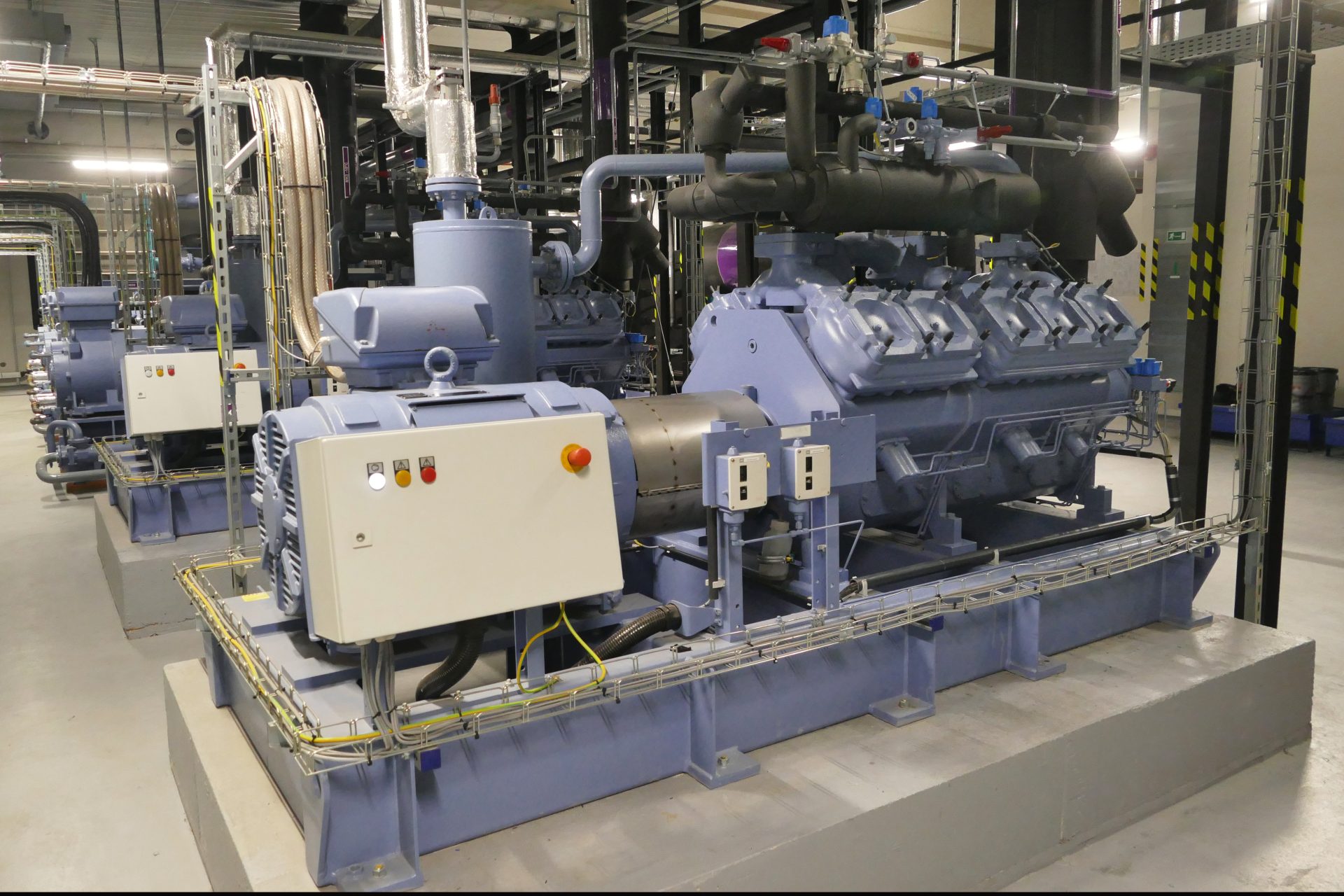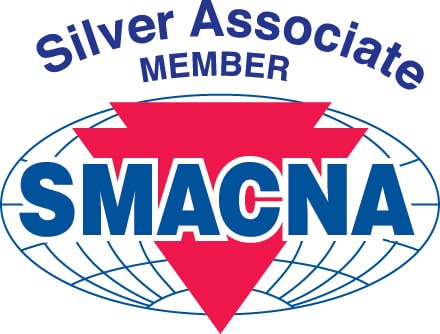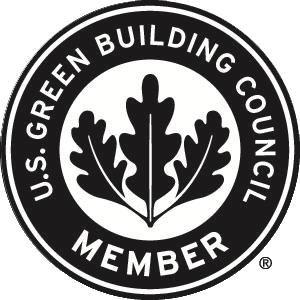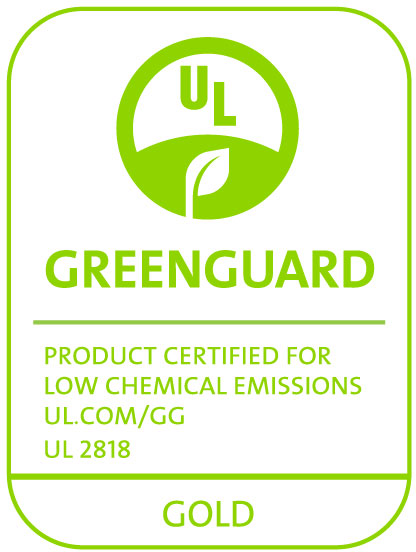This post will break down the key differences between two types of closed cell elastomeric foam insulation – EPDM (Ethylene Propylene Diene Monomer) insulation and NBR/PVC (Nitrile Butadiene Rubber/Polyvinyl Chloride).
Closed cell flexible elastomeric insulation, also known as rubber, has been commercially available in the United States for almost 70 years. Due to its closed-cell structure and built-in vapor retarder (skin), it’s commonly selected to insulate below-ambient (cold) mechanical systems such as HVAC, VRF/VRV, refrigeration, chilled water, medical gas and cold water plumbing piping and equipment.
EPDM Insulation Versus NBR/PVC Compared
Chemical Polarity
At a molecular level, all closed cell elastomeric insulation products are either “polar” or “nonpolar”. Unfortunately, this information is usually not available on manufacturer technical data sheets and websites.
Why is chemical polarity important? Think of oil (nonpolar) and water (polar). Oil and water do not get along because their electronegative characteristics drive them apart. On the other hand, water dissolves salt (polar) and just about any substance that is the least bit polar. The chemistry of polarity applies to the chemical makeup of closed cell elastomeric insulation.
EPDM insulation is nonpolar, which also means that it’s hydrophobic; EPDM does not induce or react with water, moisture and water vapor in its environment. NBR/PVC is polar, which means that it’s hygroscopic; it actually attracts water molecules. Hygroscopic closed cell elastomeric insulation has been known to eventually experience a collapsed cellular structure, decreased thermal efficiency and eventual complete breakdown (black slime).
Thermal Conductivity
Like a golf score, the lower the number, the better (i.e. 0.245 versus 0.28). Lower thermal conductivity translates into reduced insulation thicknesses. It’s important to check the closed cell elastomeric insulation manufacturer’s technical data sheets for thermal conductivity by thickness.
Water Vapor Permeability (WVP)
Standard NBR/PVC and EPDM insulation maintain a WVP rating of 0.03 perm-inch while one particular EPDM insulation’s WVP is 0.01 perm-inch; this rivals the WVP of a rigid closed cell insulation called cellular glass at 0.00. The lower the WVP, the less likely that a supplemental vapor barrier (jacket or mastic) will be required.
Continuous Service Temperatures
While both EPDM insulation and NBR/PVC share a low temperature threshold of -297°F (-182°C), EPDM can handle a continuous upper operating temperature of 257°F (125°C) with NBR/PVC at 220°F (104°C). This is particularly important when designing to insulate a VRF/VRV piping system. Most VRF/VRV manufacturers require that a closed cell elastomeric foam insulation be rated for up to 248°F (120°C) continuous.
UV Resistance
A closed cell elastomeric insulation’s chemical polarity determines its UV, ozone and weather resistance. Polar (NBR/PVC) insulation will degrade when subjected to UV so manufacturers require protection in the form of a specially-formulated UV coating or mechanical jacket. Nonpolar materials (EPDM insulation) will degrade at a slower rate than NBR/PVC. Although the same protection is recommended, it is not required. As an example, vehicle manufacturers choose EPDM rubber for OEM components subjected to heat and UV such as hoses, weatherstripping, and wiper blades.
Cold Weather Installation
“Glass transition” refers to the temperature at which a closed cell elastomeric foam insulation begins to lose flexibility, becomes brittle and difficult to install. NBR/PVC’s glass transition temperature is approximately -4°F (-20°C) with EPDM at approximately -65°F (-53°C). EPDM insulation maintains its flexibility at lower temperatures during installation.
External Stress Corrosion Cracking (ESCC)
Caution must be taken when selecting closed cell elastomeric insulation to cover expensive stainless steel (SS) piping. When any insulation contains chlorides and bromides, which are inherent in PVC and commonly used as flame retardants, these “halogens” can corrode the stainless steel piping, eventually leading to costly system failure. NBR/PVC manufacturers recommend “non-halogen” formulated products for SS applications. Be sure to check the non-halogen product’s technical data sheet for flame/smoke rating (ASTM E84 25/50) to ensure that fire safety code requirements are met. Although EPDM insulation contains very low levels of chlorine and bromine, corrosion inhibitors are added which makes it safe for installation over SS. EPDM also passes ASTM E84 up to 2” [50 mm] thick.
Antimicrobial Protection
All insulation types are subject to mold growth when organic food sources and moisture are present. As a preventive measure, NBR/PVC manufacturers add EPA-registered antimicrobial chemicals to their products during the manufacturing process. EPDM insulation, on the other hand, is naturally microbial-resistant because it does not contain organic food sources such as oils, plasticizers and binders.
PVC Content
In a growing number of owner project requirements (OPR’s) and project teams’ basis of design (BOD), installing PVC-building materials is a priority. While NBR/PVC closed cell elastomeric insulation inherently contains PVC, EPDM insulation contains ultra-low levels by weight (less than 1%). Although zero is always the goal, less than 1% comes close.
Both EPDM insulation and NBR/PVC have successfully insulated building mechanical systems worldwide for decades. Depending on your project requirements, referencing the manufacturer’s technical data sheets for physical and performance characteristics of both types can assist with meeting your owner’s project requirements.
To learn more about the chemical polarity of AEROFLEX® EPDM insulation, click here.
Source:
https://insulation.org/wp-content/uploads/2022/02/NIA-Spec-Chart-Winter-2022.pdf












